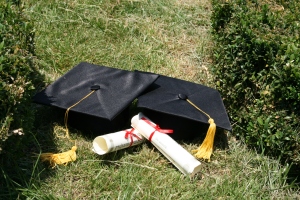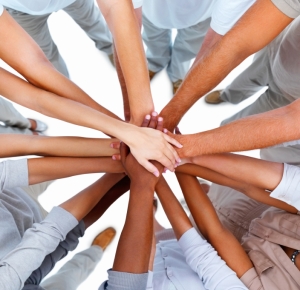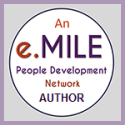I  surpassed a milestone of sorts last month. When one Russell Bush reached out to me on LinkedIn requesting a connection, he became my 4,000th connection. FOUR THOUSAND! There was no balloon drop, no marching band, nothing to mark the occasion, only another cup of Starbucks coffee when me met up a couple weeks later (I did give him a signed copy of my book, Amplify Your Value, however). 4,000 connections.
surpassed a milestone of sorts last month. When one Russell Bush reached out to me on LinkedIn requesting a connection, he became my 4,000th connection. FOUR THOUSAND! There was no balloon drop, no marching band, nothing to mark the occasion, only another cup of Starbucks coffee when me met up a couple weeks later (I did give him a signed copy of my book, Amplify Your Value, however). 4,000 connections.
OK, I can hear you now, “You must accept everyone’s requests” or “You can’t possibly know that many people”. The truth is I do not accept all requests. There have been some doozies over the years, like the guy trying to tell me my long lost relative left me with $10,000,000 in gold bullion, or, the woman from eastern Europe looking for a “friend”. Fortunately, those are few and far between. Mostly, I look for people who want to share insights, are in transition, or just looking to make a professional connection. (I’m not really looking to be sold to, so if that is why you are reaching out, chances are I won’t accept.)
As for knowing 4,000 people. I have to admit, there are some names in there that I do not remember how we connected. Sometimes, looking at the date we made the connection helps jog the memory banks, other times, that doesn’t even help. However, I do try to stay in touch will all of them. Part of my morning ritual (in addition to coffee with my wife and the Today show), is to review the notifications in LinkedIn and send birthday wishes, congratulations on work anniversaries and new jobs, and sometimes just to say “hi”. Sky Caserotti and I get a good laugh every year on his birthday when I send the message, we’ve been dancing that dance a long time!
I started on LinkedIn September of 2006, just a few short years after the platform launched. My first connection? Steve Johnson. Steve and I worked together at Thomson (RCA, now Technicolor). I recruited Steve to relocate his family from California to Indianapolis and join me at Lauth Property Group. During the real estate crash of 2008/2009, I was forced to lay Steve off as the company downsized dramatically. Believe it or not, we are still friends (I think)!
Those first couple of years, most of my connections were with colleagues from my Thomson days. I found LinkedIn a great way to stay connected as we all went our separate ways and our careers grew. Eventually, I started connecting with business partners, CIOs from other organizations and “old” friends. My oldest friend being Andy O’Donnell.
Andy and I worked together at Indiana National Bank (now Regions) a million years ago. We were in the bank’s running club, the Bison Stampeders. Just about every day, we would meet for lunch to go running. Andy was a bank officer and therefore had access to the Officer’s Lounge, complete with showers and lockers. I was Andy’s guest so often, I still get emails about Officer reunions, even though I never was one! We ran when it was hot (once being featured on the news for what NOT to do when it is 97 degrees), we ran when it was cold (weather too bad to be outside, we ran the stairs – 36 flights up, 36 down – twice).
Since Thomson was a global company, my LinkedIn connections were also global. My dear friend Laurent Ricard, jumps off this list. During one my trips to Paris when Carmen joined me, Laurent and his beautiful wife Agnès hosted us for a fabulous holiday dinner of quail and brussel sprouts. We met his two children. As time went by, his son Guillaume and I connected on LinkedIn and Facebook. He once recorded a guitar riff for one of my presentations. He is now contemplating an internship here in the US. Connections. Multi-generational connections.
In 2009, my number of connections jumped. I had left Lauth and was launching my own business, Confluence Dynamics, a green business consulting firm. I added clients and colleagues in the “green” industry to the list. One of my first clients (perhaps my first) was Kevin McKinney, publisher of Nuvo, an alternative newspaper in Indianapolis. Kevin was gracious enough to take a risk on my business very early on, though he did question me extensively on what an IT guy knew about HVAC systems, plumbing, electrical and industrial cleaning. (For the record I was LEED Accredited!) Kevin would later play a major role in one of my son’s music videos. While that is a story for another day, it did spawn the phrase, “It’s not a rap video until the cops show up”, just sayin’.
business, Confluence Dynamics, a green business consulting firm. I added clients and colleagues in the “green” industry to the list. One of my first clients (perhaps my first) was Kevin McKinney, publisher of Nuvo, an alternative newspaper in Indianapolis. Kevin was gracious enough to take a risk on my business very early on, though he did question me extensively on what an IT guy knew about HVAC systems, plumbing, electrical and industrial cleaning. (For the record I was LEED Accredited!) Kevin would later play a major role in one of my son’s music videos. While that is a story for another day, it did spawn the phrase, “It’s not a rap video until the cops show up”, just sayin’.
To no fault of Kevin’s, my foray into this space was short lived, and in early 2010 I launched a job search. As a result, my LinkedIn connections jumped again. I was amazed at the number of people who met me for coffee. People I hadn’t seen in 20 years, said yes, I would be glad to help (Elaine Bedel). People I didn’t even know, said yes, when can we meet (Geoff Endris). It was humbling. Dozens and dozens. When I landed the CIO role at Goodwill, I was thankful for each and every one who said yes (no one EVER said no). I made a promise to myself, two promises actually. Promise one: I will never let my network go stale (hence the birthday and anniversary greetings, Sky). Promise two: whenever anyone asked me to network because they were in transition, the answer would always be “yes”.
Goodwill enabled me to connect with hundreds of people. Some colleagues at Goodwill of Central Indiana, some colleagues at other Goodwill organization, tied together by a common brand and a common mission. Some, like me, have moved on from Goodwill, but I know I speak for all of them when I say, we carry Goodwill in our hearts. Together we accomplished some amazing things. Together we built an amazing network.
I could go on and on. I am sure there are people in my connections where my memory fails me and I don’t recall the circumstances under which we met, however I’ve scrolled through the first thousand names and I remember each one. I could tell you where we met and under what circumstances. I could write a book…huh…I could write a book! I could write a book from the stories. What an epic story it would be. An amazing group of people. Some I’ve never met face to face, yet we have a shared history. We have touched each other, if only briefly. You are all part of my tribe. Thank you! Thank you for connecting, Thank you for sharing yourself. Thank you for your role in making me who I am.

 Thinking back, I am not sure what I expected. I had been asked to represent the executive staff by speaking at the graduation ceremonies for one of our high schools (didn’t know Goodwill Indy had high schools, did you?). I was flattered to have been asked, but really had no idea what to say. This was not an ordinary high school, this was a school for adults who had dropped out for one reason or another, but who now wanted to come back and complete their high school diploma, not just earn a G.E.D. I would be speaking at
Thinking back, I am not sure what I expected. I had been asked to represent the executive staff by speaking at the graduation ceremonies for one of our high schools (didn’t know Goodwill Indy had high schools, did you?). I was flattered to have been asked, but really had no idea what to say. This was not an ordinary high school, this was a school for adults who had dropped out for one reason or another, but who now wanted to come back and complete their high school diploma, not just earn a G.E.D. I would be speaking at  proudly. As I congratulated each of them, tears continued to well up. This is why we do what we do, this is why I do what I do, for those 56 new high school graduates that are ready to take on the world!
proudly. As I congratulated each of them, tears continued to well up. This is why we do what we do, this is why I do what I do, for those 56 new high school graduates that are ready to take on the world!
 At first there was some awkward chit-chat and bemusement, I don’t think many of them could believe we were actually on a hay ride. The further along the pathways we traveled, the polite chit-chat gave way to laughter, spirited conversation and picture taking. You could sit and watch the inner child come out. By the time, we were halfway done, there was debate about which wagon was the “cool, more fun wagon”. (Personally, I think the one I was in was the cool wagon!).
At first there was some awkward chit-chat and bemusement, I don’t think many of them could believe we were actually on a hay ride. The further along the pathways we traveled, the polite chit-chat gave way to laughter, spirited conversation and picture taking. You could sit and watch the inner child come out. By the time, we were halfway done, there was debate about which wagon was the “cool, more fun wagon”. (Personally, I think the one I was in was the cool wagon!). them!). About a year ago, I got really technologically advanced and used my iPad to type notes, thus saving the transcription step. I still found that I would miss things because I was busy typing the previous nugget. (on this subject, don’t those people that use laptops with noisy keyboards to take notes incessantly throughout a conference just drive you nuts?).
them!). About a year ago, I got really technologically advanced and used my iPad to type notes, thus saving the transcription step. I still found that I would miss things because I was busy typing the previous nugget. (on this subject, don’t those people that use laptops with noisy keyboards to take notes incessantly throughout a conference just drive you nuts?). I think over time as more and more event planners adopt these strategies the process will improve even more. For example, I would love to see separate hashtags for each session. This would enable you to further organize your “notes”. Also, it would be great if events included the speaker’s Twitter handle and LinkedIn link in their bios to facilitate learning more of their thoughts and potentially continuing the dialogue. I would also like to see more events put their guides online, in e-book format or even in app format, that would enable clickable links.
I think over time as more and more event planners adopt these strategies the process will improve even more. For example, I would love to see separate hashtags for each session. This would enable you to further organize your “notes”. Also, it would be great if events included the speaker’s Twitter handle and LinkedIn link in their bios to facilitate learning more of their thoughts and potentially continuing the dialogue. I would also like to see more events put their guides online, in e-book format or even in app format, that would enable clickable links.



 tap into the full talent, creativity, experience and passion of your employees, customers, and suppliers? What if you could minimize the constraints imposed by specialization and compartmentalization? What if you could retain or recapture some of the benefits, human and organizational, of that collaborative start-up without losing the glue that currently holds the organization together?”
tap into the full talent, creativity, experience and passion of your employees, customers, and suppliers? What if you could minimize the constraints imposed by specialization and compartmentalization? What if you could retain or recapture some of the benefits, human and organizational, of that collaborative start-up without losing the glue that currently holds the organization together?” The underlying systems that tie all of this together are evolving at a lightning pace. Driven by the continuing consumerization and “appification” of IT, we have seen an explosion of technology, including smart phones and tablets. In 2012, for example, the number of smartphones in the market exceeds 1 billion, and it is estimated that by 2015, tablet sales will exceed that of traditional PCs.
The underlying systems that tie all of this together are evolving at a lightning pace. Driven by the continuing consumerization and “appification” of IT, we have seen an explosion of technology, including smart phones and tablets. In 2012, for example, the number of smartphones in the market exceeds 1 billion, and it is estimated that by 2015, tablet sales will exceed that of traditional PCs. The same could be said for data. “Data, data everywhere, but no information to use.” In 2012, approximately 2.5 quintillion (2.5 x 1018) bytes of data were created every day! The industry has tagged this with the name “Big Data.” Making sense of all that big data and turning it into actionable information has given rise to a new type of position in many companies, that of “data scientist.”
The same could be said for data. “Data, data everywhere, but no information to use.” In 2012, approximately 2.5 quintillion (2.5 x 1018) bytes of data were created every day! The industry has tagged this with the name “Big Data.” Making sense of all that big data and turning it into actionable information has given rise to a new type of position in many companies, that of “data scientist.”
 In his book, “The Future of Work,” Thomas Malone compares the transformation occurring in business today to the evolution societies have experienced. In antiquity, societies were made up of bands of people. They were very decentralized and unconnected. During the Middle Ages, kingdoms brought these bands under centralized control, but they were still largely unconnected from the central power. Democracies enabled society to decentralize and still remain connected.
In his book, “The Future of Work,” Thomas Malone compares the transformation occurring in business today to the evolution societies have experienced. In antiquity, societies were made up of bands of people. They were very decentralized and unconnected. During the Middle Ages, kingdoms brought these bands under centralized control, but they were still largely unconnected from the central power. Democracies enabled society to decentralize and still remain connected.

